Keyword
hidrogeologija
29 record(s)
Type of resources
Categories
INSPIRE themes
Keywords
Formats
Representation types
Scale
Resolution
-
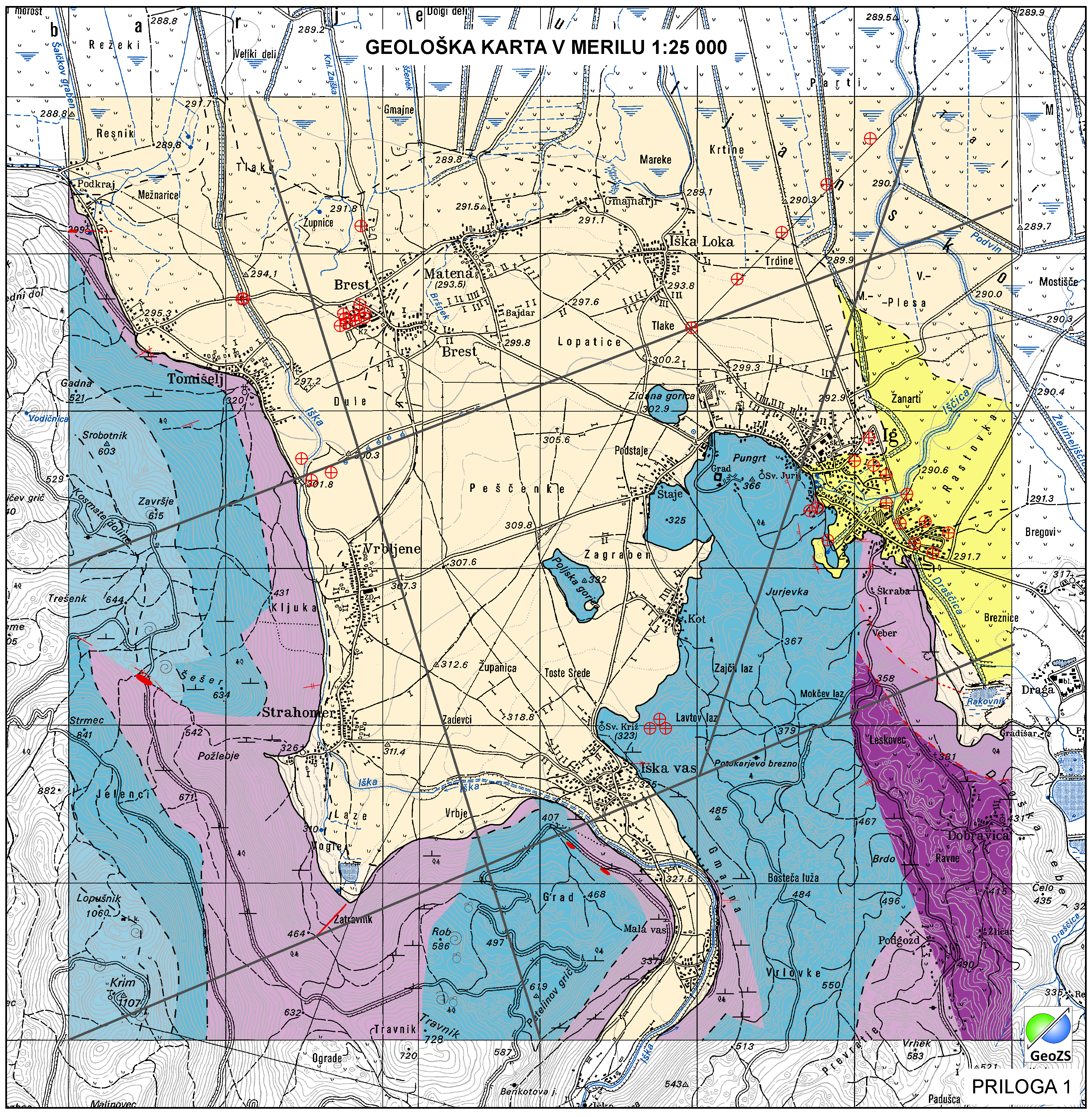
Data of Geological map were reclassified into classes of IAH classification on the base of hydrogeological characteristics. IAH classification is based on description of the hydrogeological units. Firstly, based on extensiveness and productivity and secondly on type of porosity. The purpose is to provide assistance to the strategy of groundwater exploitation as to protection and water resources management.
-
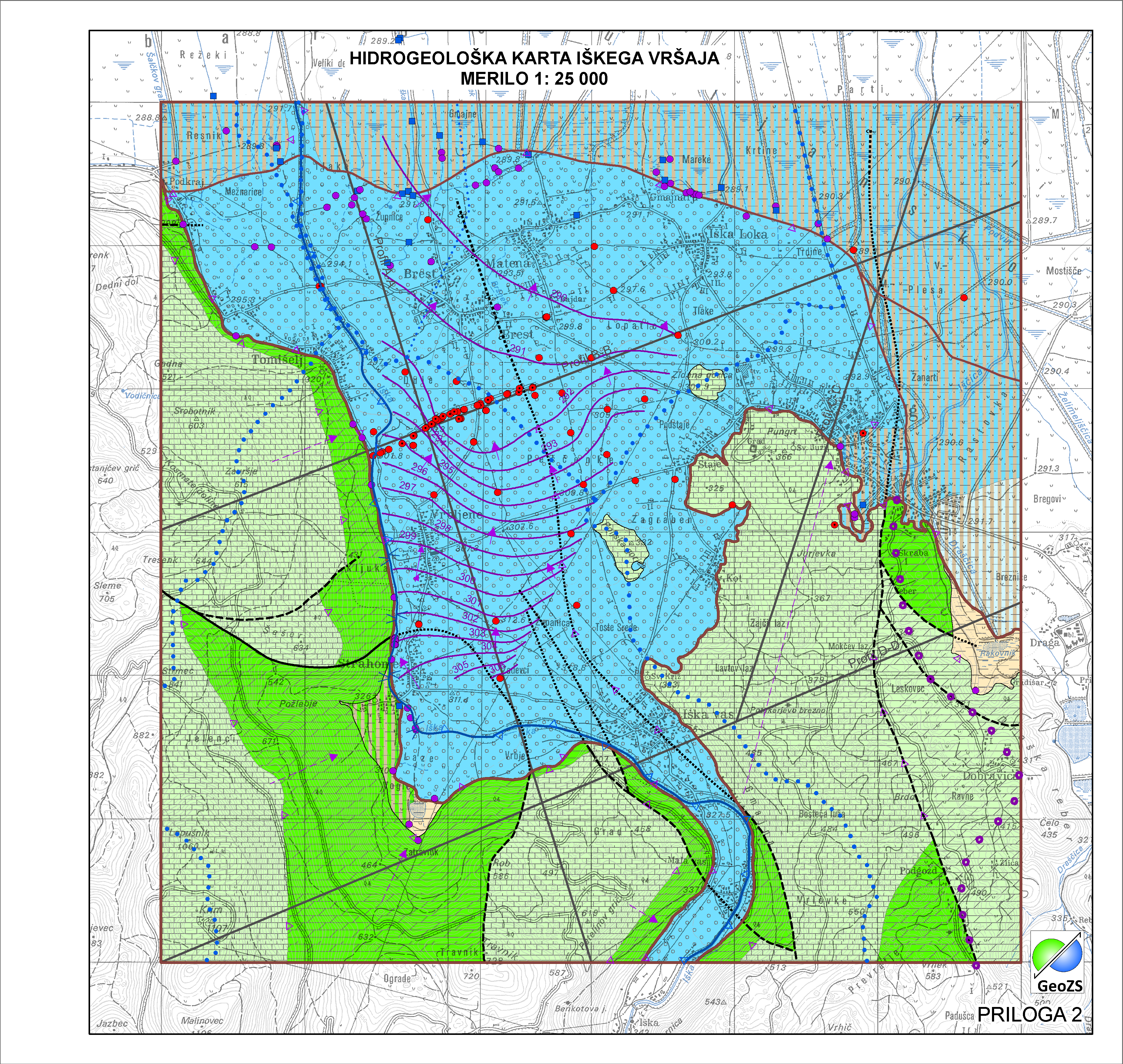
Naravni hidrogeološki objekti, kjer podzemna voda po naravni poti pride na površje.
-
The underground geothermal conditions can be presented, irrespective of the aquifers' position, with the appropriate geothermal maps. These maps represent the expected isoterms at a depths and are derived from Geothermal maps - Expected temperatures , which are made with data from 302 boreholes. It is made on the basis of measured temperatures in accessible boreholes throughout the country. However, since the temperature field depends on the geological structure in the depths and tectonic characteristics, the course of the isotherms is a result of many influences, such as thermal conductivity of rocks, permeability and fracturing of rocks, all of which are reflected in the measured temperatures in boreholes. The distribution of boreholes, which were useful for the measurement of temperature, is very uneven and different as regard the depths.
-
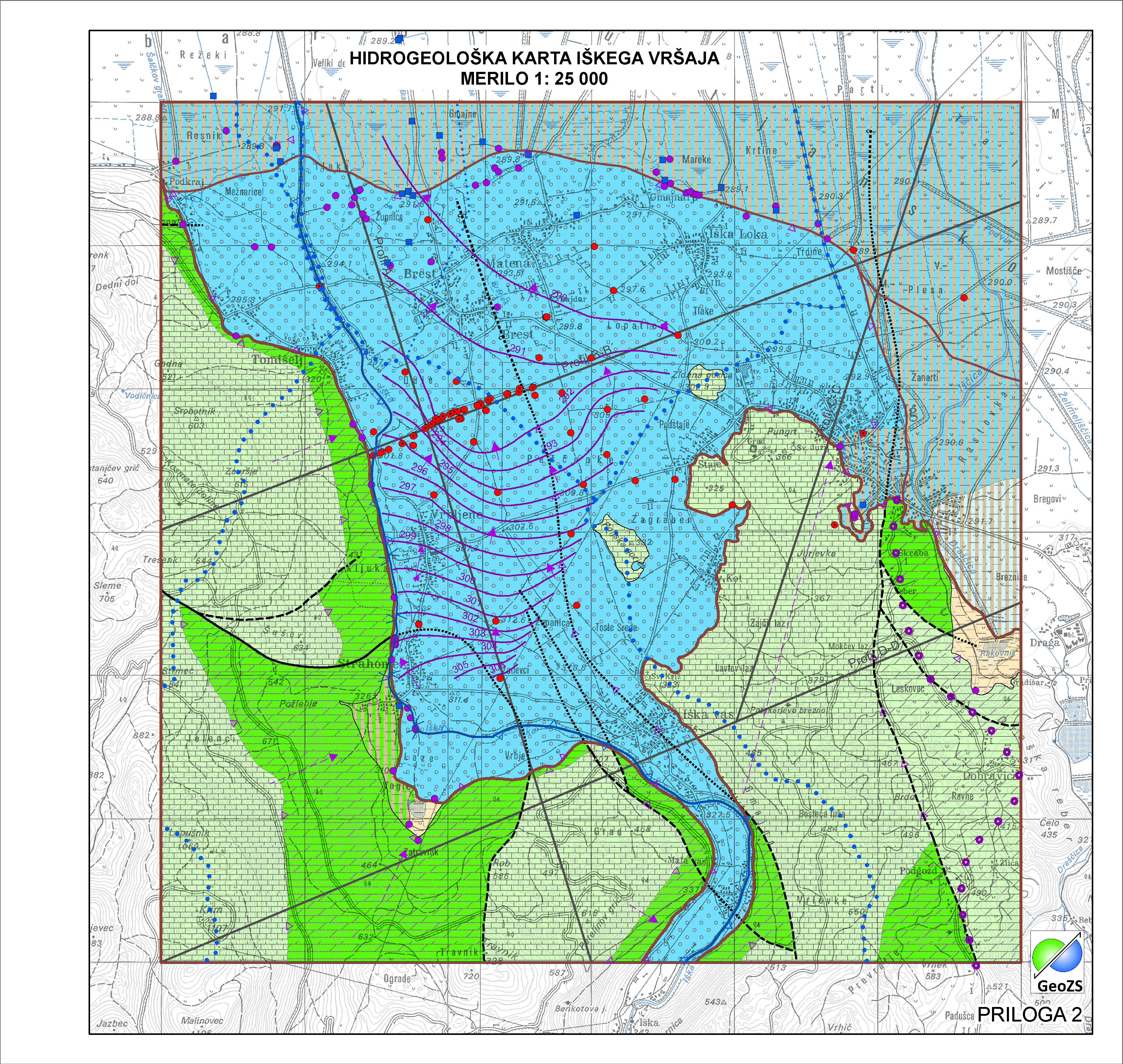
Relief karbonatne podlage pod aluvijalnim prodnim zasipom Iškega vršaja z obrobjem je narejena na popravljenem modelu po Menceju (1990), ki je bila narejena v okviru Projekta INCOME (Janža e tal., 2012). Za potrebe hidrogeološke karta Iškega vršaja je bila podlaga popravljena s dodatnimi seizmičnimi podatki in podatki iz vrtin projekta INCOME. Podlaga je pripravljena v grid obliki 5x5.
-
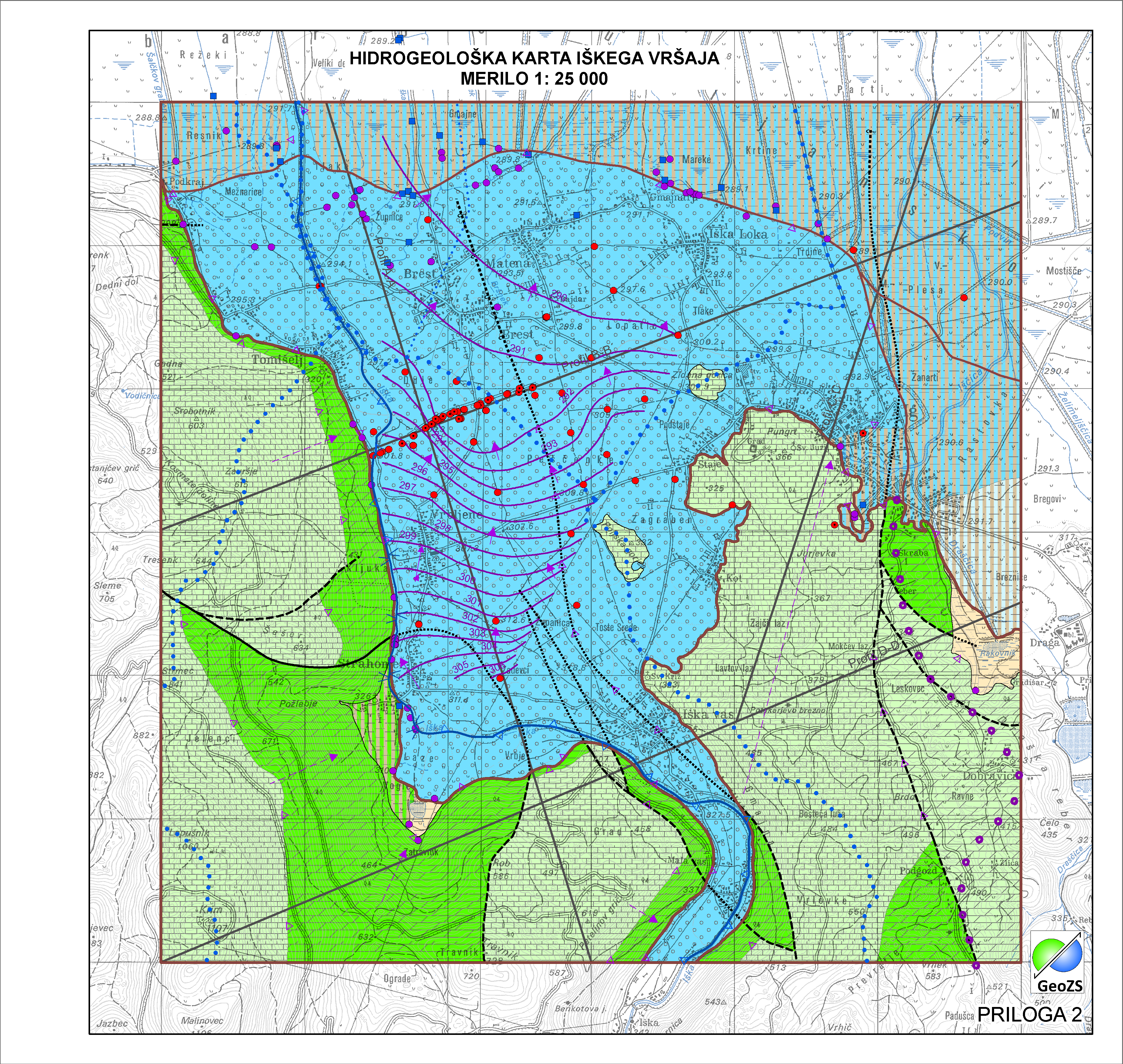
Vodonosni sistem je ozemlje z geološko zgradbo, v kateri nastopata vsaj dva različna vodonosnika, z ali brez medsebojne hidravlične povezave. Na obravnavanem območju so bile meje vodonosnih sistemov prilagojene na merilo karte 1:25.000. Namenjena so zanesljivemu ugotavljanju stanja celotne pomembne prostornine podzemnih voda v državi in doseganja okoljskih ciljev, ki jih predpisuje Vodna direktiva.
-
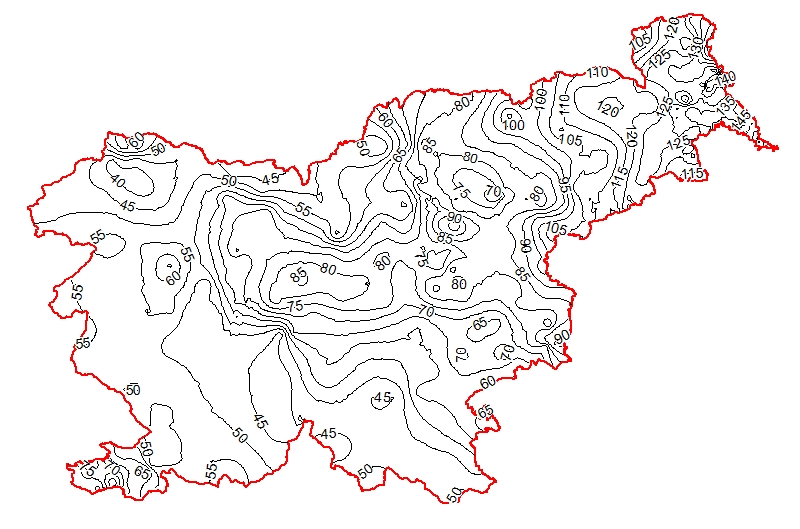
The underground geothermal conditions can be presented, irrespective of the aquifers' position, with the appropriate geothermal maps. This map represents the expected temperature lines at a depth of 3000 m and is derived from Geothermal map - Expected temperatures at a depth of 3000 m, which is made with data from 214 boreholes. It is made on the basis of measured temperatures in accessible boreholes throughout the country. However, since the temperature field depends on the geological structure in the depths and tectonic characteristics, the course of the isotherms is a result of many influences, such as thermal conductivity of rocks, permeability and fracturing of rocks, all of which are reflected in the measured temperatures in boreholes. In this depth also a radiogenic heat production in the rocks has smaller influence. The distribution of boreholes, which were useful for the measurement of temperature, is very uneven and different as regard the depths. Following the expected temperatures at a depth of 3000 m a stronger positive anomaly is in the northeastern part of Slovenia, from the line Maribor-Rogatec to the east, while in the eastern part of the Krka basin there is no anomaly any more. In the northeastern part of the country the anomaly is the result of the thinning of the Earth's crust and greater conductive heat flow from the Earth's mantle. Elsewhere temperatures are much lower.
-
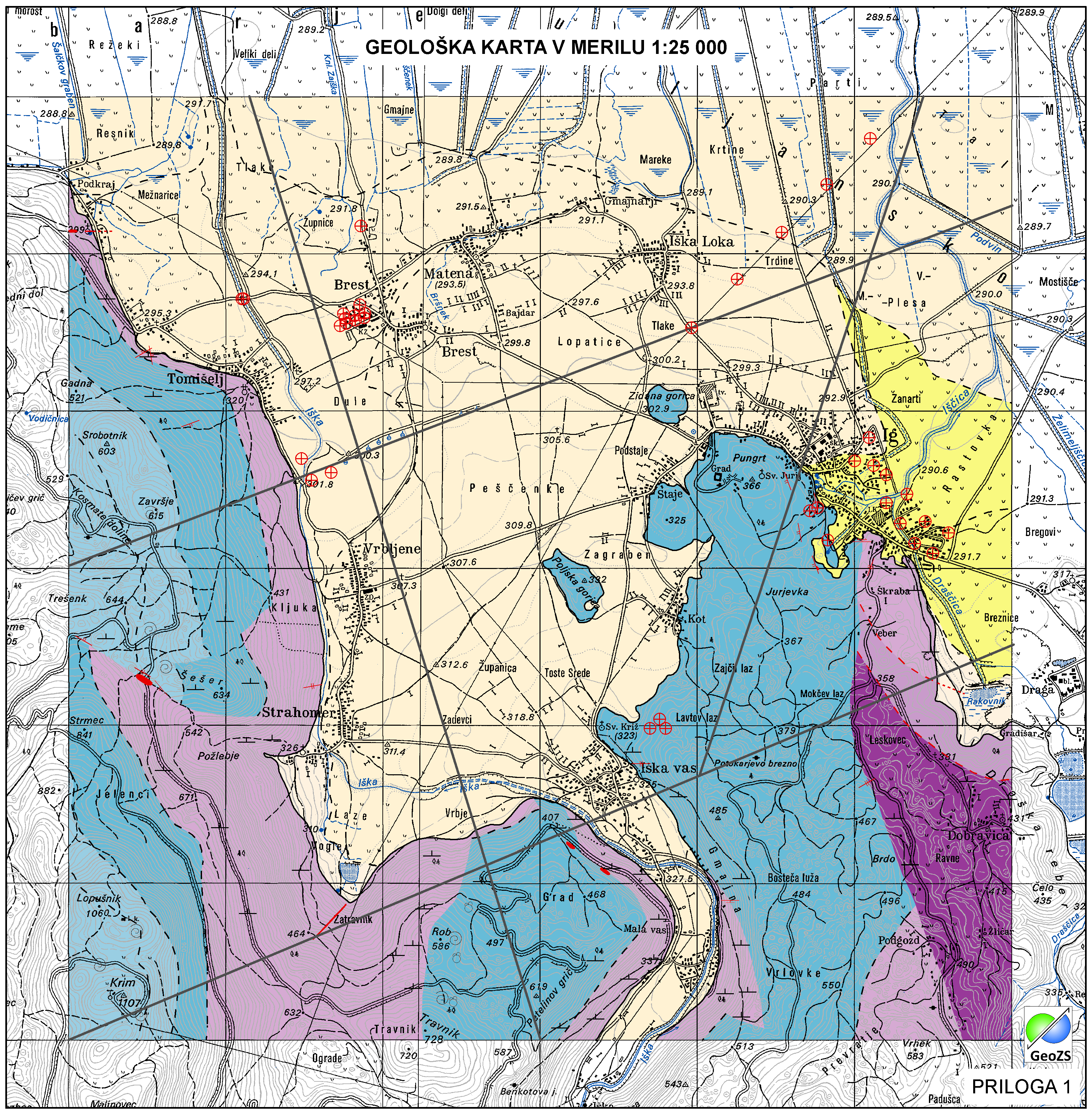
Layer shows discontinuities in the geological structure, and characterizes them according to their type and observation method.
-
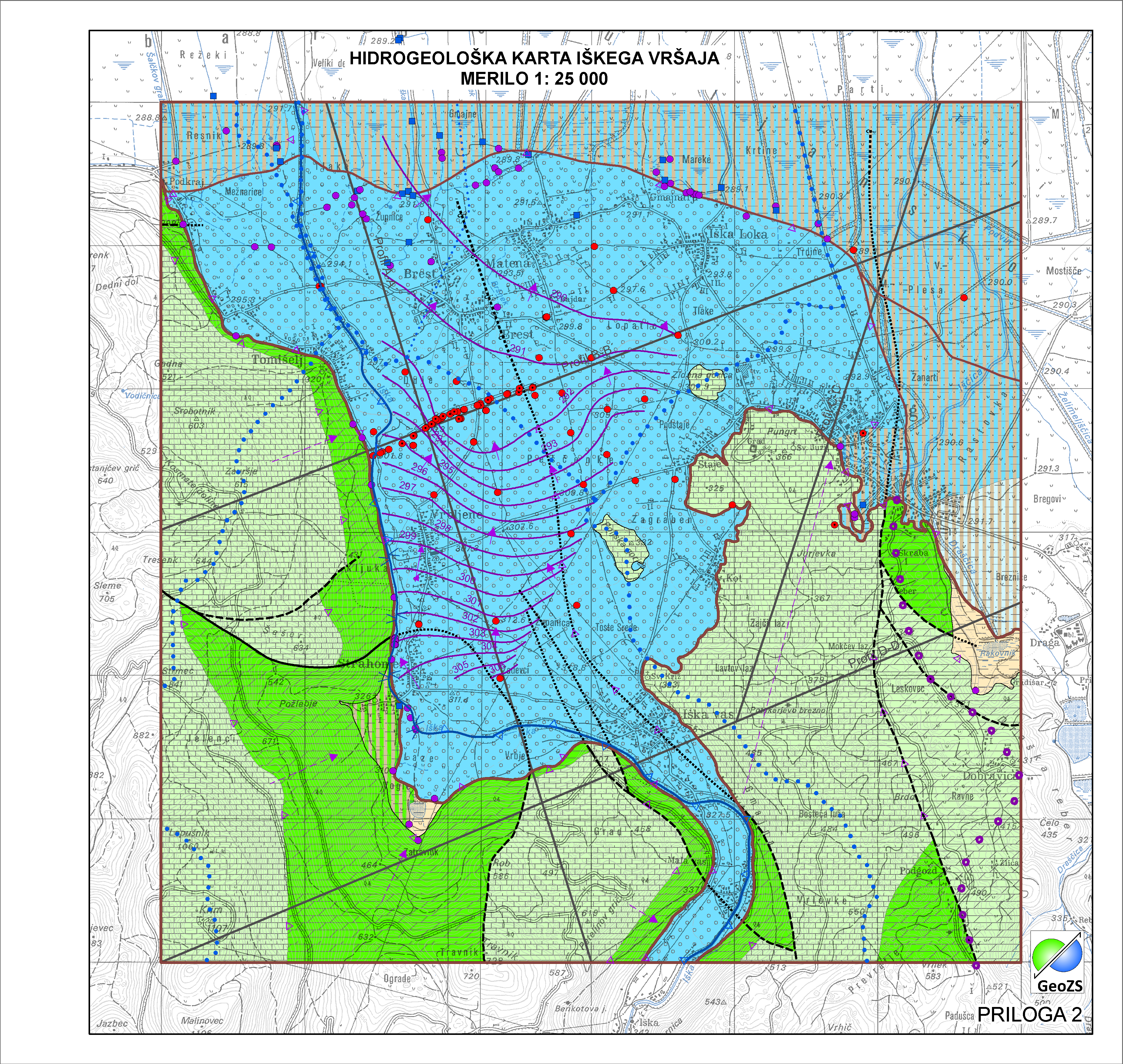
Karte prostorske porazdelitve vrednosti spremenljivk vezanih na temperaturo zraka so narejene na osnovi meritev klimatoloških meteoroloških postaj, ki so v obravnavanem obdobju neprekinjeno delovale vsaj deset let. Za računanje vrednosti spremenljivk vezanih na temperaturo zraka v pravilni mreži z ločljivostjo 100 m x 100 m je bila uporabljena metoda optimalne prostorske interpolacije, ki upošteva povezanost obravnavane spremenljivke z nadmorsko višino in preko izbrane okolice upošteva tudi vpliv mikrolokacije. Zaradi majhne gostote mreže opazovanj, je vpliv mikrolokacije možno upoštevati le v manjši meri.
-
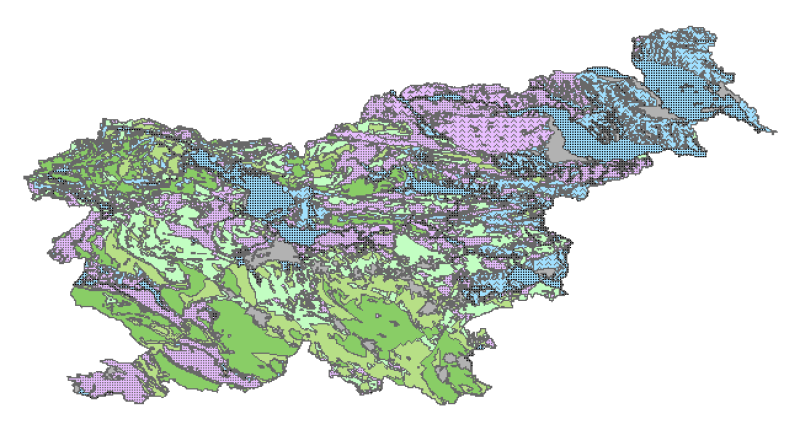
Hydrogeological map of Slovenia 1:250.000 represent hydrogeological characteristics of overlaying strata. The identification and classification of strata is based on LAWA classification. Hydrogeological units of LAWA classification are defined on type of porosity and basic petrographical composition. Geological strata with kartic porosity were additionaly classified after karstification stage.
-
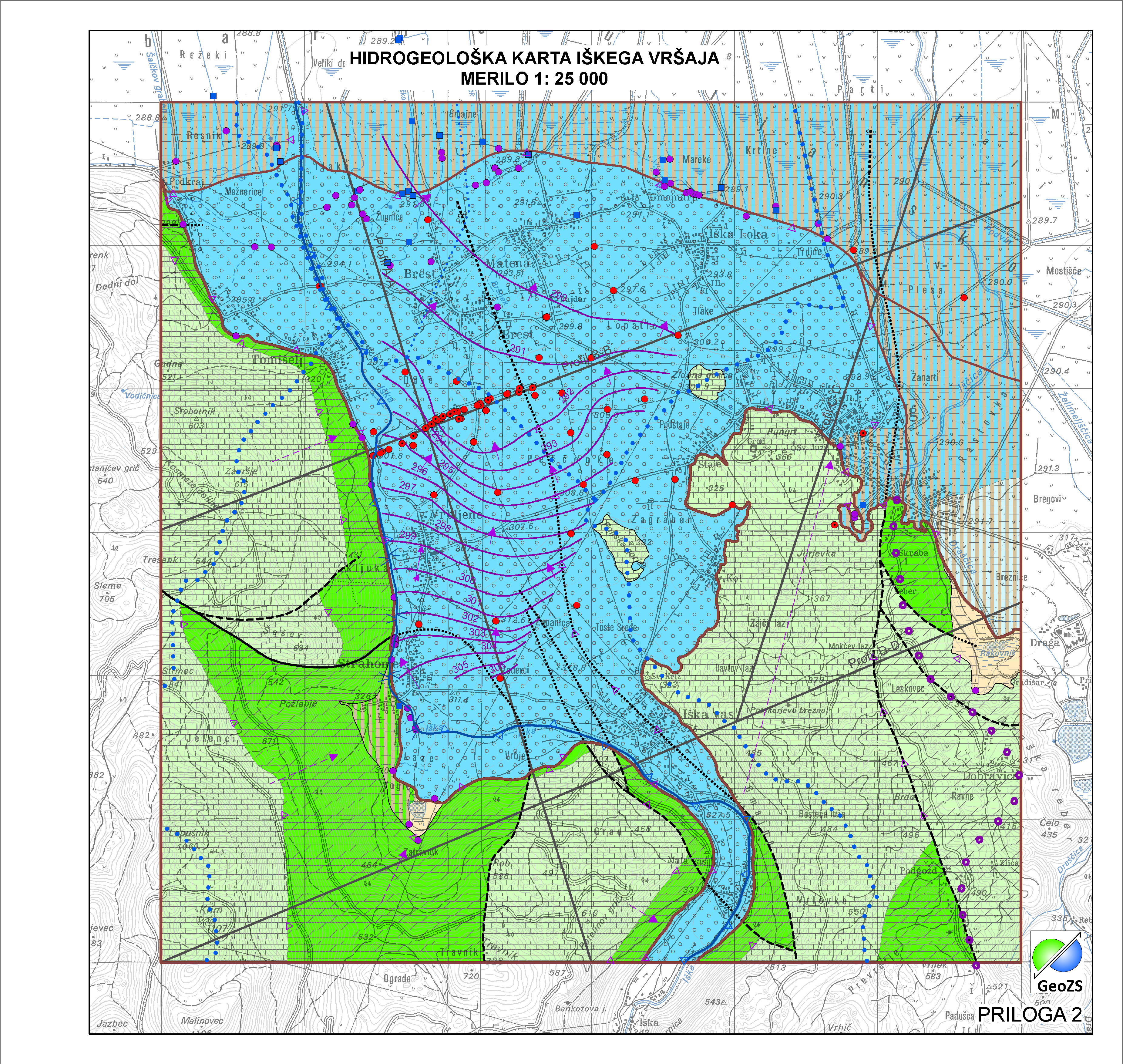
Data of Geological map were reclassified into classes of IAH classification on the base of hydrogeological characteristics. IAH classification is based on description of the hydrogeological units. Firstly, based on extensiveness and productivity and secondly on type of porosity. The purpose is to provide assistance to the strategy of groundwater exploitation as to protection and water resources management.
 Slovenski INSPIRE metapodatkovni sistem
Slovenski INSPIRE metapodatkovni sistem